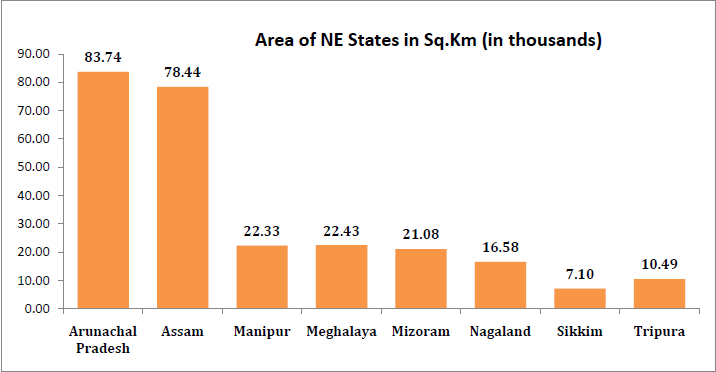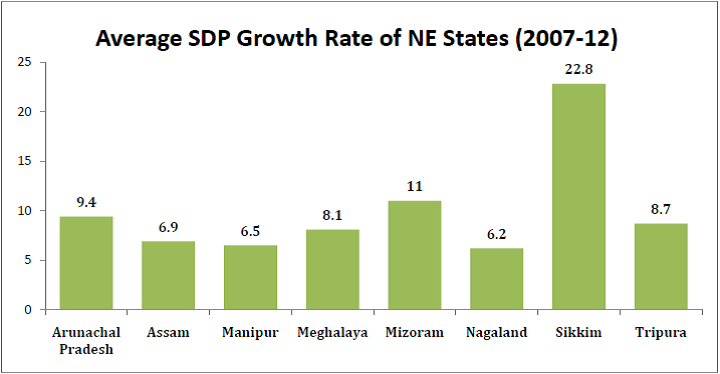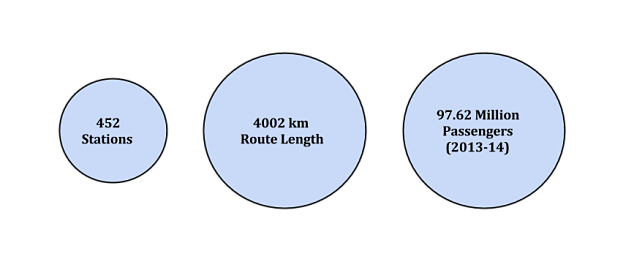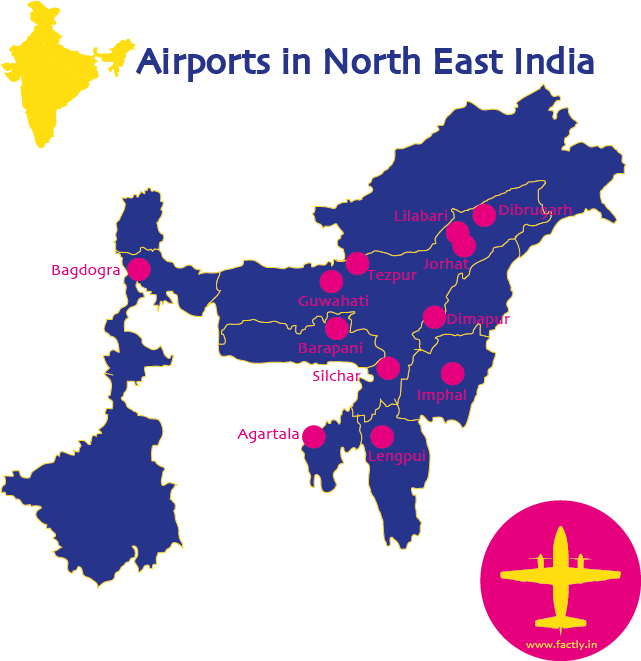The North East India holds an important position from a strategic point of view as these states share their borders with other countries like Bangladesh, Bhutan, Myanmar and China. The terrain, the state of Socio economic development and historical factors such as language/ethnicity, tribal rivalry, migration, control over local resources and a widespread feeling of exploitation and alienation have resulted in a fragile security situation in the North Eastern States. This has resulted in violence and diverse demands by various Indian Insurgent Groups (IIGs).
[orc]Let’s take a deep dive by understanding the development in terms of the numbers presented by the North East division and Ministry of Home Affairs for North East development. This will be followed by a story on the North East culture.
Population & Area
As per the 2011 Census, almost 3.7% of the Indian population resides in Assam, Arunachal Pradesh, Sikkim, Mizoram, Manipur, Meghalaya, Tripura and Nagaland occupying a total area of 7.97% of the total land in India.
State Domestic Product (SDP)
SDP is the total value of goods and services produced during any financial year within the geographical boundaries of a state. Growth accelerated in all NE States during 11th five year Plan period (2007-12). The average growth rate of the NE states was 9.95% against the national average of 8%. Growth was supported by good performance in the agriculture sector including horticulture, floriculture, fisheries, rubber & oil palm
Railways
The presence of railways in the North Eastern Region is more than 125 years old when the first passenger railway system came into being in 1881 between Dibrugarh and Sadiya. Since then, the railway system in the region has grown considerably.
The North East Frontier Railway Zone (NF Railways) directly or indirectly serves all the eight North Eastern states besides West Bengal and Bihar. NF Railway has become the lifeline of the North Eastern region transporting essential goods all over the region. It moves coal and petroleum products from this region to the rest of India. NF Railway also serves as a rail head for the landlocked Himalayan countries of Nepal and Bhutan and provides interchange facilities with Bangladesh.
The NF Railways has 452 stations covering a route length of 4002 km and a track length of 5971 km (as on 1st January, 2015). It carried 97.62 million passengers in 2013-14 at an average of 2.68 lakh passengers per day.
Roadways
Roadways are the backbone of transport and communication in the North East primarily due to the terrain and sparse distribution of population. Road connectivity is planned in four categories: (i) Connectivity within each State (ii) Intra-regional connectivity (iii) Connectivity to rest of India (iv) Connectivity to neighbouring countries. It has a total of about 5000 km of National Highways running through these states.
Airways
Most of the places in the North Eastern Region are inaccessible and located in far-flung areas. The road and rail infrastructure is inadequate; therefore, air connectivity is an important means of transportation in the Region both for intra-State connectivity and the Region’s linkage to the mainland. There are a total of 23 airports in the North Eastern Region out of which 12 are operational.
Sources:
Planning Commission of India
Ministry of Development of North Eastern Region
Ministry of Home Affairs – North Eastern Division








2 Comments
Thanks a lot.
Part II will be updated soon?
Yes, it will follow